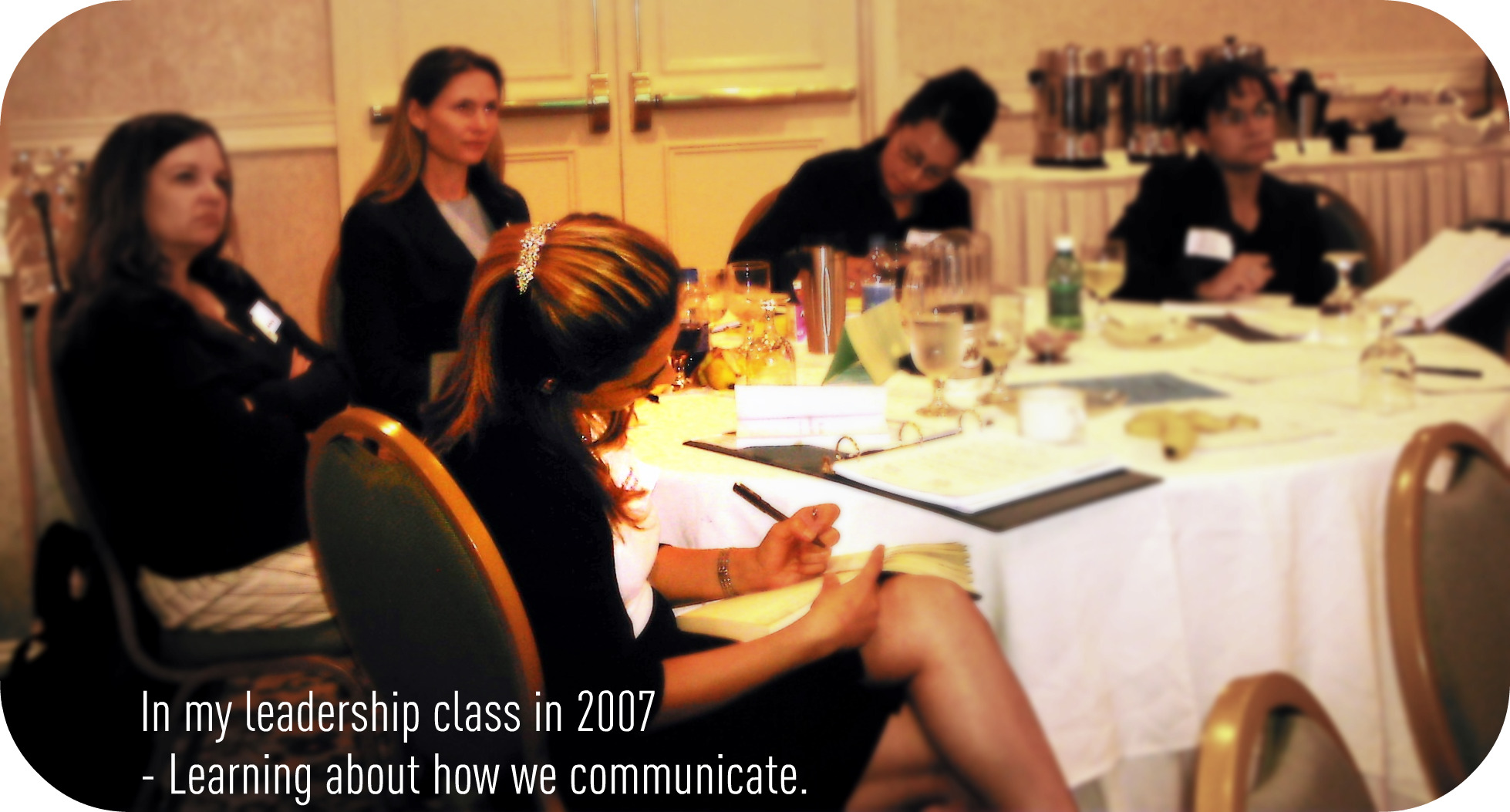“The more I understand differences, the more I like people.”
These were the words our leadership instructor wrote on the flip chart the day we talked about our communication styles. Our subject that day was Laura Browne’s blue book, an insightful pack of surprisingly eye-opening material in just 158 pages.
 My leadership program assigned us this reading on women’s unique communication styles with other women. Many of our discussions in this women’s leadership program came back to one topic – why women do not get along with other women at work? What are the dynamics that shift the focus from real problems in corporate advancement and cause women to often see their peers as threats rather than inspiration? Why is success viewed as a zero-sum game, as though there is not enough of it to go around for all qualified parties?
My leadership program assigned us this reading on women’s unique communication styles with other women. Many of our discussions in this women’s leadership program came back to one topic – why women do not get along with other women at work? What are the dynamics that shift the focus from real problems in corporate advancement and cause women to often see their peers as threats rather than inspiration? Why is success viewed as a zero-sum game, as though there is not enough of it to go around for all qualified parties?
As part of the reading list for this class, I read two books. This post is about “Why can’t you communicate like me?” by Laura Browne. The other book was “Changing the Corporate Landscape” by the founder, Jean Otte. Filled with witty and wise comments, and a play on words of the cliches and standard leadership mantras, Jean Otte paints a pretty accurate picture of the general powers at play between men and women in large companies. She does all this by drawing parallels between the corporate landscape and an English garden. The elements of success are common between a thriving garden and a thriving workplace.
A few months before this leadership class, one of the senior women at work let me down. She plagiarized my work, and befriended my boss to keep him from taking my side in the argument. This was no ordinary woman who was jealous of my success and my general skills and accomplishments – this was a woman I had trusted as a mentor and a confidante for the past year, and one who was already senior to me in rank, position and power. The blow from this event permanently severed my relationship with my boss, who unconditionally supported her side of the argument. The only obvious choice before me was to walk away from it all in pursuit of a better environment. How can you go on working with people you hardly trust after an unresolved situation such as this? While I am now thrilled with my peers, and have long since recovered from the event, her behavior remained a puzzle until I read this book. I do not condone her actions; I just see better why we did not communicate well.
According to Browne, whose book is specifically for women’s communication style, we fall into one of four types below:
- The Bossy Type
- The Bubbly Type
- The Buddy Type
- The Brainy Type
The author describes each type by writing from the voice of that particular type. When you read about The Bossy Type, it is written from the perspective of bossy woman, and so on for all four types. This subtle cleverness she employs has two effects:
- First, she clearly demonstrates the characteristics of a certain type by giving her a voice in the chapter.
- Second, she forces the reader to test for herself whether this particular type is appealing by listening to her, rather than just reading abstractly about her.
It may all seem more fluff than substance when you first learn about the types – and I assure you that I would have written about ‘fluffiness’ in detail if I thought so – and yet I found much value in the logical descriptions provided by the author to help us understand “the 4Bs”!
Reading is the best pastime for an active mind! If you like to see the other book reviews, check the index of In Print.
This book was speaking to me on an eerily accurate level. I quickly stopped mocking the model as I was able to piece together countless interactions that go awry with other women in my path and confrontations which arise from lack of effective communication. Awareness of a problem and the root cause for the issue is the first step towards resolution, and sometimes the hardest.
This is a simple and fun read with Browne’s clever writing, as she writes from her own voice, then from the voices of each personality type. The reader is asked to take a simple quiz to determine her balance among the 4 types. I found my results to be shocking in accuracy. At the end of this book, I gained invaluable insight into communicating more effectively with other women not by using the same techniques with everyone – but with making an educated guess as to what type they most likely resemble, and by communicating in ways that appeal to their style best.
I admit I would like to think that I should not have to adapt my style to others – why can they not adjust to me instead? I have struggled enough with this during my career that I have decided it comes down to this: I want to get the effective communication done more than the luxury of having others communicate like me. Selfishness in this case stems from my vested interest in the final results and a mutually happy engagement with the other person. Therefore bending my style to adapt to others in order to achieve more success at the end is smart and sensible.
The right message at the wrong time is the wrong message.
 I am Farnoosh, the founder of Prolific Living. So glad you are here. My mission is to empower you to unblock your creative genius to live your dream life.
I am Farnoosh, the founder of Prolific Living. So glad you are here. My mission is to empower you to unblock your creative genius to live your dream life.